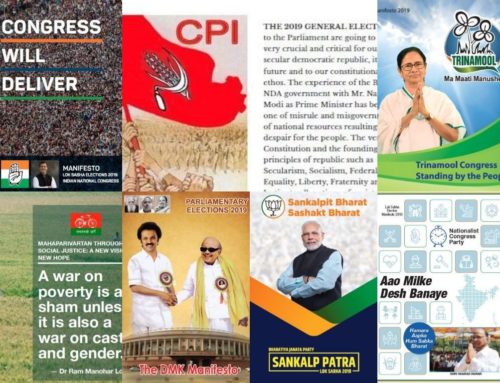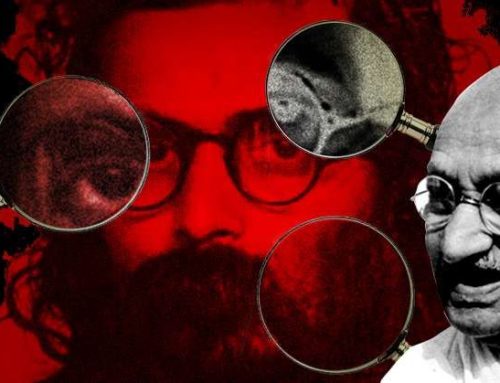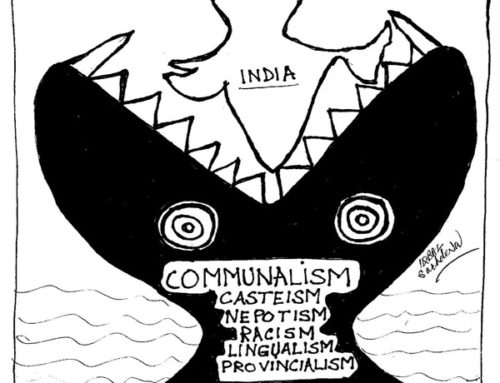Dr.Asghar Ali Engineer Memorial lecture:
“Muslim Global Actors from South Asia: World Making from the Margins of the Islamic World”
by Dr. Dietrich Reetz
Report by MeetaTarani
(Secular Perspective November 16-30, 2016)
The Seventh Dr.Asghar Ali Engineer Memorial Lecture was delivered by Dr. Dietrich Reetz from ZentrumModerner Orient (ZMO), Berlin on the topic of “Muslim Global Actors in South Asia: World Making from the Margins of the Islamic World” on 14th October, 2016 at Max Mueller Bhavan, Mumbai. Dr. Reetz remarked that at a time when Islam and Muslims have become severely contested references in global and Indian politics, it is highly pertinent to remember the pluralist nature of the religion. Throughout the lecture, he put forth the opinion that as a result of globalization, translocal and transnational Muslim networks and institutions play an increasingly independent role, one that goes beyond diaspora religious activism. He exemplified the same through relevant discussions of contemporary global Muslim networks.
In a discussion about globalisation, he attempted to debunk the notion of globalisation as being reduced to an economic and financial phenomenon, in tandem with the predominantly western understanding of the term. Rather, the concept of globalisation should be approached in a pluralistic manner, which broadens the understanding of globalisation through non-economic perspectives, such as its political, religious, historical and socio-cultural aspects. The resulting globalities or ‘sediments’ of globalisation can be studied as conditions, networks, structures and patterns of interaction emerging from the process. According to Schäfer (2007), globality is a condition, a new stage of instant hyper-connectedness, and/or, the local outcome of one or many processes of globalisation. The focus on the economic aspects of globalisation could be one of the reasons for the marginalisation of Muslims from South Asia in the dominant discourses of Islamic globalisation. Statistically speaking, this marginalisation is befuddling, as of the total Muslim population in the world, 80% are from Asia, out of which 600 million reside in South Asia, which is more than twice of the Arabic-speaking Muslim population.
He differentiated between two ways to examine Islamic globalisation: (a) the doctrinal/ideological path and (b) the secular trajectory. The former follows the theological and ideological dispersion of Islam, through various schools of thought, and the latter emphasises the social movements derived from those. Examples for the former would be the spread of Sufism through their network of Shaykhs and disciples, the sectarian divisions of Shia-Sunni and their schools of thought as well as movements and networks stemming from these like the Ahl-i-Hadith, Deoband, Nadwa, Barelwi, TablighiJamaat, Khilafat Movement, along with activists and rationalists like Sayyid Ahmad Khan, M. Barkatullah, or Ubaidullah Sindhi. For the latter way of studying, Islamic globalities would be traced through the global interactions of Islam on their worldly, i.e. secular trajectories, i.e., the spread of the British Colonial Empire and the subsequent migration of South Asian Muslims leading to high eco-political mobility in the Muslim communities of South Asia which had been seen extensive even before the emergence of modern colonialism in the spread of Muslim trading castes from Gujarat to East and South Africa, South East Asia. This approach lays an emphasis on the networks formed among the diaspora community with its shared economic and political concerns being in dialogue with their shared doctrines of belief.
These globalising Muslim networks can be studied across different spheres of interaction: translocal, or that which transcends the limit and boundaries of the local, but is not the same as transnational, which specifically looks at the globalities that transcend the boundaries of a nation-state.
At this point, the discussion steered towards the process of world-making in global Islam, primarily through methods of social intervention. World-making refers to the systemic plan or process of giving meaning to particular forms of interactions, with a distinction between world-making as a plan (an example could be the cartographic representations of their outreach programs in the Tablighi Jamaat administrative office), and as a process (the reinterpretation of Muslim interventions in the process of globalisation, across time and space). According to Dr.Reetz, world-making with reference to Islamic and other religious or ethical frames becomes significant, especially in the aftermath of the cold war, due to the vacuum left by perceived end of ideologies and a resulting lack of social and moral models of conduct. As new modes of global governance are being actively searched for, it is no coincidence that religious actors and institutions are getting actively engaged in the process of norm-setting, and more so for Islam and the Muslim world where most global strategic interventions played out since the early nineties. This also extends to social fields, the economy and finance addressing concurrent processes of globalization. Thus the model of Islamic Banking, very much like the environmentally motivated Green Banking, lays down norms and rules for people on how to deal with the ‘material’ world, which in turn shapes a part of their life as well as their interactions with the world.
Another instance of ‘secular’ interventions by Muslim actors can be seen in the international trips organised by the Tablighi Jamaat, where students from universities enlist to go on missionary tours. One can see this as another form of world-making as the group performs the task of an experienced ‘travel agency’ that helps one travel without compromising on one’s moral principles. Several other organisations like the Minhajul Quran provide legal and social rehabilitation advice to migrants in western countries and are thereby involved in a similar process of world-making.
Muslim world-making can be understood proceeding in two ways, in doctrinal and in secular (social) terms. At the doctrinal level, Muslim world-making concerns itself with the idea of how to live in this world vis-à-vis life in the Hereafter. This theological engagement with the earthly world leads them to behave in a particular manner, one that is in accordance with their moral beliefs regarding what will lead them to a good afterlife. Thus, one witnesses a constant flurry to increase their ‘piety achievements’ counted by some groups as sawab by performing deeds and actions that ease the journey to jannat (heaven). At the secular or social level, we study the influence of the shared affiliations, beliefs, practices of these communities and their interactions with the globalised world. For example, how do women in Muslim communities from different areas deal with gendered religious practices, or how mosques in specific areas engage with the local culture, by conducting their activities in the language of the region.
Dr. Reetz proposed to look closer at the various manifestations of doctrinal differentiation within Islamic thought in the society at-large. Doctrinal differentiation occurs due to either the positioning of the doctrine, or its practice in the Islamic field. The diversity of groups and networks can be unlocked by tracing how they position themselves to the three basic orientations of (a) reformation (islah), (b) adherence (taqlid) and (c) independent reasoning (ijtihad). Thus, by examining the different modern-day Muslim groups, we understand how geo-political and geo-economic forces affect the concepts and practices of a particular school of thought, and how cultural and religious capital gets transformed into social capital, position and behaviour.
In this process it becomes clear that doctrinal orientations are not singular and not one-directional. They at times combine unexpected counter-positions and produce gliding shifts of paradigms in the wider Islamic field in order to distinguish themselves from ‘competitors’. The Deobandis aspire for islah while they also believe in the unity of sharia and tariqa. They are not anti-Sufi, in that they believe in Sharia-compliant Sufi practices (tasawwuf) but they oppose selected Barelwi practices of Sufism, notably with regard to shrines. The Ahl-i-Hadith reject(or accept)all law schools and cut themselves off from the Sufis while identifying themselves as Salafis maintaining close contacts with Saudi-Arabia. While opponents often call them Wahhabis they are quite distinct from Wahhabis as Wahhabis do follow a particular law school – Hanbali law. The Jamaat-i-Islami combines doctrinal orthodoxy – which they share with Deobandis and Barelwis–with political modernity actively engaging in oppositional politics in South Asia. The Barelwis are following traditional taqlid, but have since their organisation emerged increasingly adopted formats of the Deobandi School, such as madrassas with class-room teaching sharing the same Dars-e-Nizamicurriculum. This is not dissimilar to reformist efforts of islah. They also engage in loyalist politics. The Ahmaddiya follow doctrinal conservatism with a staunch emphasis on social modernity, combined with political loyalism. The Aligarh tradition mandates an exclusive focus on the Quran and a rejection of the Hadith. The rationalist reading of the Quranis illustrative of their inclination towards ijtihad.
Dr. Reetz argues that these doctrinal groups could be understood as religio-cultural milieus, as they extend beyond emphasising merely doctrines manifesting themselves in the form of social organisations and cultural practices as well. Over the years all of them developed similar formats with separate wings for women, students, children, with modern sub-groups and also radical outfits. Thus these milieus become internally differentiated based on their different forms of engagement with doctrine and practice, where they establish their own centres, places of worship, educational institutions, etc. There is also a constant evolution and change in these milieus because of social and political pressures, with intensified competition for followers in a globalised Islamic field.
He then introduced institutions and practices of two networks, the Deobandi schools, and the modernist, International Islamic universities, as global actors from South Asia involved in the process of Islamic world-making. The symbolic centre of the Deobandi School is located at Deoband in North India, whereas that of the latter is at the International Islamic University, Islamabad. The Deobandi School underwent a split due to a family dispute soon after the centenary celebration of the school in 1982, though with little consequence on affiliated schools in South Asia and beyond. The missionary movement of the Tablighi Jamaat had largely followed the Deobandi orientation of doctrine and practice (aqidah). The ways this movement and the Deobandi schools operate (intizam) clearly reflect historic administrative traditions that could be traced back to the Mughal ways of administration. The spread of the Deobandi School beyond South Asia can be much attributed to Tablighi missionary travel, or khuruj. The Tablighi Jamaat– as well as most other Islamic groups of South Asia – conducts annual congregations ijtema which aid the spread of cultural and religious values through emotional capital, in the form of speeches at these gatherings. When it was founded, the Deobandi School was rather ‘outrageously’ modern as it implemented elements of class-room teaching, hostel student life, rigorous examination and course structures, adapted from British-led colleges like Delhi college of the time. An analysis of the international student composition of the Deobandi madrasa over time shows a pattern of stronger representation by certain regions at particular points in time. Larger groups of international students came from Africa (particularly South Africa), Malaysia, France, Bangladesh and Afghanistan, as they made up for the highest share of foreign students at particular periods of time, with Malaysia and South Africa contributing the first- and second-most share of the international student population after the South Asian countries. The Tablighi presence does not stop here, and can also been seen in regions of Great Britain, the U.S., South Africa. Its presence in the Saville Town area of Dewsbury in England, where their European headquarters and central mosque are located has left its deep imprint on social life where bars and pubs were shutting down and gender segregation visibly increased in public. While there has been considerable amount of political discussion in the UK and elsewhere whether this has led to more integration or segregation of Muslim migrants of South Asian descent with the rest of England, proponents of the movement have referred to their social impact as reforming the second and the third generation of migrants,
as the region has also seen a reduction in crime rates and precarious social life-situations. Public engagement in parts of the UK and France, coupled with conservative theological commitment to Islam was the hallmark of the Tablighi presence in Europe. Of all the global interventions of religious movements of Islam from South Asia, the Tablighi Jamaat stands out in its globality. This is demonstrated in its ability to cross the ‘ethnic’ divides by going completely native in several countries and regions, such as South-East Asia, Central Asia, the Maghrib or France. It is notable that the Tablighi standard clothing – by outsiders regarded as a ‘uniform’– all over the world is the regular Indian shalwar-kameez, which is illustrative of how globalisation works to contextualise appearances.
The International Islamic University, Islamabad, is remarkably different from the educational institutions of the religious movements (madrasas) in that the students would either attend a course at one of the secular faculties (social sciences, engineering etc.),or at a religious faculty (like usuluddin), and the two would almost no overlap. However, even students who opt for a secular faculty are imparted a basic training in religion and in the Arabic language. The student bodies operating in the university are also clearly include both the secular and religious groups, with each advocating their own principles. For India, there is a similar university, Al Jamia Al Islamia, in Malappuram, Kerala. Studying at these universities was generally perceived as an attempt to incorporate secular education into religious life-worlds facing employment demands of the global and local market. In the aftermath of the Cold War, international Muslim students joined the IIUI in the belief that it could offer them both a new ethical and political reference as well as preparation for jobs in the globalised world. The share of foreign students in composition of the entire student base at the International Islamic University declined from 28% in 1999 to 12% in 2004, rather drastically.
Dr. Reetz concluded by remarking on the growing overlap and interconnection among the new and old formats of the religio-cultural milieus adopted by Muslim global actors in South Asia, with an increasing similarity in their profiles. There has also been observed a tendency among the networks to grow more ideological, combined with a greater emphasis on development to meet the challenges of globalisation. Overall, these global actors are focussed on marking and making place and space for Muslims in a globalised world.
References:
- Schäfer, W. (2007). Lean Globality Studies. Globality Studies Journal.
- Reetz, D. (2010). ‘Alternate Globalities?’ On the Cultures and Formats of Transnational Muslim Networks from South Asia. In: Ulrike Freitag/Achim von Oppen (eds.), Translocality: The Study of Globalising Processes from a Southern Perspective. Leiden: Brill, 293-334.






